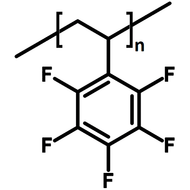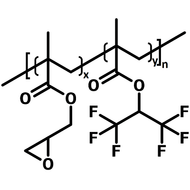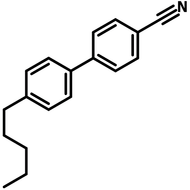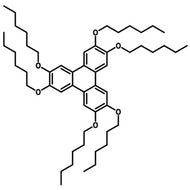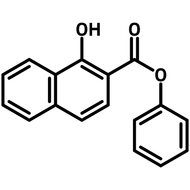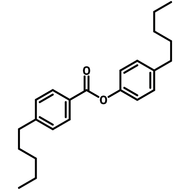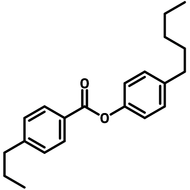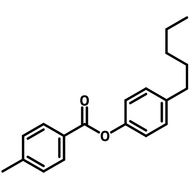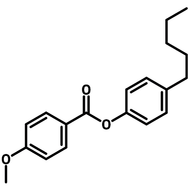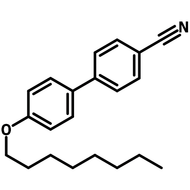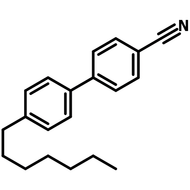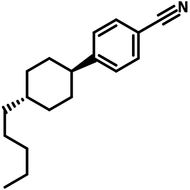Poly(pentafluorostyrene-co-glycidyl methacrylate) 50/50
CAS Number 224962-38-3
Poly(pentafluorostyrene-co-glycidyl methacrylate), glycidyl methacrylate 50 mol%, low-loss optical waveguide
Photocrosslinkable polymer designed to incorporate photochemical amplification for applications in the field of optoelectronics such as a cladding layer in optical waveguide
Poly (2, 3, 4, 5, 6-pentafluorostyrene-co-glycidyl methacrylate) (PFS-co-GMA), CAS number 224962-38-3, is a copolymer with the backbone of fluoroine rich pentafluorostyrene (PFS) and photocrosslinkable glycidyl methacrylate (GMA) units. The combination of pentafluorostyrene and glycidyl methacrylate in the copolymer structure can provide good image retention after development of the cross-linked network.
With good thermal stability and low loss, poly(pentafluorostyrene-co-glycidyl methacrylate) copolymers have been a promising candidate for the application of optical waveguides. Optical waveguide devices fabricated from PFS-co-GMA as the core and cladding layer material have exhibited optical loss as low as 0.39 dB/cm and 0.42 dB/cm at 1320 and 1550 nm. Optical losses were observed to increase to 0.75 dB/cm at 1550 nm after annealing at 200 °C for 1 h under nitrogen atmosphere.
Fluorinated copolymer
For optielectronic applications
Low optical signal lost
As low as 0.39 dB/cm and 0.42 dB/cm at 1320nm and 1550 nm
Worldwide shipping
Quick and reliable shipping
High purity
>98% High purity
Chemical Structure

General Information
| CAS Number | 224962-38-3 |
| Chemical Formula | (C8H3F5)y(C7H10O3)x |
| Full Name | Poly(pentafluorostyrene-co-glycidyl methacrylate), glycidyl methacrylate 50 mol% |
| Purity | >98% (1HNMR) |
| Form | White powder/crystals |
| Solubility | Acetone, chlorinated solvents, DMF, MEK, NEP, THF |
| Melting Point | Tg = 63 °C |
| Synonyms | P(PFS-GMA), PFS-co-GMA, Poly(glycidyl methacrylate-co-pentafluorostyrene), Poly(2,3-epoxypropyl methacrylate-co-pentafluorostyrene) |
| Composition | Glycidyl methacrylate 50 mol %, x = 0.48-0.52, y = 0.48-0.52 |
| Classification / Family | Polystyrenes, Glycidyl methacrylate copolymers, Cross-linkable polymers, Photonic and optical materials |
MSDS Documentation
 Poly(pentafluorostyrene-co-glycidyl methacrylate) MSDS Sheet
Poly(pentafluorostyrene-co-glycidyl methacrylate) MSDS Sheet
Pricing
| Batch | Quantity | Price |
| M2369A1 | 500 mg | £310 |
| M2369A1 | 1 g | £480 |
| M2369A1 | 5 g | £1650 |
Batch details
| Batch | Mw | Mn | PDI | Stock Info |
| M2369A1 | 51,836 | 12,167 | 4.31 | In stock |
Literature and Reviews
-
Low-Loss Passive Optical Waveguides Based on Photosensitive Poly(pentafluorostyrene-co-glycidyl methacrylate), C. Pitois et al., Macromolecules, 32, 9, 2903–2909 (1999); DOI: 10.1021/ma981057x.
- Controlled Synthesis of Poly(pentafluorostyrene-ran-methyl methacrylate) Copolymers by Nitroxide Mediated Polymerization and Their Use as Dielectric Layers in Organic Thin-film Transistors, A. Peltekoff et al., Polymers, 12, 1231 (2020); DOI: 10.3390/polym12061231.
-
Synchronously improved wave-transparent performance and mechanical properties of cyanate ester resins via introducing fluorine-containing linear random copolymer, Y. Zhou et al., Adv Compos Hybrid Mater 4, 1166–1175 (2021); DOI: 10.1007/s42114-021-00349-3.

